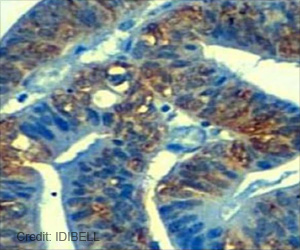A synthetic version of a rare toxin produced by a sea creature hold promise as cancer treatment with minimal side-effects.

- A synthetic compound DZ-2385, produces from the toxin of a sea creature hold promise for cancer therapy.
- The compound DZ-2384 binds to protein tubulin, and disrupts mitotic spindle.
- The compound to attack growing cancer cells while minimizing damage to healthy cells.
The compound the scientists synthesized, DZ-2384, is more potent and lasts longer in the bloodstream than natural diazonamide.
Scientists discovered that the synthetic diazonamides minimized undesirable toxic effects that are commonly associated with chemotherapy.
When combined with a chemotherapy drug called gemcitabine (which is marketed under the brand name Gemzar), the compound is effective in rodents for combating advanced pancreatic cancer.
The researchers found that synthetic diazonamides' therapeutic window was at least 10 times larger than that of traditional anti-mitotic drugs.
DZ-2384 works by disrupting a molecular machine called the mitotic spindle, which the cell uses to pull replicated chromosomes apart during division.
Research used a technique called X-ray crystallography to determine the structure of the DZ-2384 bound to tubulin.
Their work offers a possible explanation for how DZ-2384 could disrupt dynamic tubulin polymers during cell division but spare those polymers in resting cells like neurons in the peripheral nervous system.
And that is what appears to allow the compound to attack growing cancer cells while minimizing damage to healthy cells, which can lead to the painful side effects of conventional chemotherapy.
There are numerous compounds that affect spindle function, including several FDA-approved cancer drugs. These agents, which are called anti-mitotics, have a typical pattern of toxicity associated with their use.
Peripheral neuropathy is one of the chief side effects of anti-mitotic chemotherapy, and it is often severe enough that doctors decide to stop administering chemotherapy, at least temporarily, in order to reduce patients' pain.
But once treatment is suspended, tumors tend to return, and often in forms that are resistant to drugs.
DZ-2384 is an anti-mitotic that behaves differently.
In the study, researchers implanted or grew tumors in hundreds of rodents as models for various types of human cancer.
They found that in animals receiving DZ-2384, tumors shrank as much as or more than when a conventional anti-mitotic was used, but with much less toxicity at effective doses.
Animals receiving DZ-2384 also had markedly less peripheral neuropathy -- a type of debilitating nerve pain that often affects humans who take anti-mitotic drugs -- than those that received docetaxel, a conventional anti-mitotic.
"One piece of the puzzle after another came into place over time," Harran said. "Now, we have the chemistry, the biochemistry, the structural biology, the pharmacology and toxicology. We have a deep understanding of what this drug is doing."
"We have good reason to expect that human clinical trials of DZ-2384 will show that, at doses effective for treating a person's cancer, there will be much less risk of the peripheral neuropathy that can force clinicians to stop treatment," he said.
Harran believes the research could ultimately help large numbers of people with cancer, and he expects human clinical trials to begin within two years.
Source-Medindia














